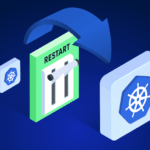
Tools and Tactics for Managing Costs: How to Nail Your Strategy Once and For All

Senior Content Manager
Rising cloud costs can put a serious damper on your digital transformation efforts. When visibility, resource allocation, and governance are up in the air, it’s easy for spending to get out of control. But your AWS bill does not have to be a villain.
We’ll share how to conquer AWS cost optimization once and for all through detailed strategic initiatives as well as helpful tools, tactics, and mapping strategies that will help you get more bang for your buck.
Understanding the Problem of Spiraling Costs
After surveying 100 CIOs and CTOs, we found that cost saving is one of the main drivers of cloud migration. Yet, 32% of organizations claim that once their business matures and scales, their cloud ROI tends to decline or plateau. In fact, 68% of IT decision makers say that their cloud infrastructure has become more expensive in the past year.
How does this occur?
More growth means more people, more cloud resources, and more data. It’s difficult to take accountability for all the resources and storage your environment requires, especially when it’s unclear who created each resource, for what purpose, and whether or not it’s still needed. Predicting what you’ll need in advance also becomes problematic as you grow, leading to a tendency to over-provision storage and compute resources.
These are expensive mistakes that can cost businesses millions of dollars.
AWS shares five best-practices for managing the costs of cloud architecture. If you’re missing even one or two of these, you can easily see that reflected on your monthly cloud bill:
Cloud Financial Management– The cloud’s dynamic nature makes keeping track of costs difficult without the right processes and procedures in place. Developing a FinOps team, identifying key cloud stakeholders, implementing governance processes, and putting a CFM tool in place for managing Reserved Instances or Auto Scaling, will go a long way to ensure cloud costs are being tracked and managed properly.
Expenditure and usage visibility- The flexibility of the cloud enables various teams across the organization to utilize cloud services simultaneously, making it difficult to gain holistic real-time visibility into usage. Poor integration between cloud systems, and a lack of alignment between the cloud tools and technologies that teams deploy often results in duplication of data, efforts, and spending across multiple teams. Tagging resources, setting up monitoring tools, and using tools like AWS Cost Explorer can help provide more visibility.
Cost Effective Resources- AWS offers a variety of cost efficient pricing models to help their customers get more bang for their buck. Reserved Instances offer up to 70% in discounts off on-demand EC2 usage, Saving Plans offer a smaller discount but provide greater flexibility if you want to make changes to EC2 commitments, and Spot Instances can provide up to 90% in discounts, but only work for short-term usage in limited circumstances. You also might want to consider your options for reduced redundancy storage. You can find more information on each of these pricing models in this AWS cost optimization guide.
Managing Demand and Supply Resources- As engineers are tied to fast development, they often over-provision on resources, so that they are not left unstuck if they need to scale quickly or unexpectedly to meet demand. This cloud waste has a serious impact on your bottom line, and it’s a common problem. In fact, 66% of organizations admit to over-provisioning last year. On the other hand, under-provisioning is also a problem, where developers are left without the resources that they need.
Optimizing over time- As your requirements change, failure to remove idle or unused resources, and implement new features and resource types, can come back to bite you in an expensive kind of way. Most organizations admit to having idle/unused resources in their system, which can be anything from resources that run full time even though they aren’t in use for more than a few hours, or forgotten instances that were used for development or testing environments and weren’t shut down after use.
While all these factors pose a tremendous challenge for organizations looking for a systematic, proactive approach to managing their AWS costs, there are a variety of tools, strategies, and mindset adjustments that can be put into place to keep costs in line.
Check out our full white paper to learn about solutions that will help you go from zero to hero in managing your burgeoning cloud costs.
Related Articles
-
How we cut Kubernetes costs by half at Wildflower
September 30, 2025 -
 Why it’s time to get off the manual Kubernetes optimization treadmill
Why it’s time to get off the manual Kubernetes optimization treadmill
August 14, 2025 -
 Zesty now supports In-Place Pod Resizing for Seamless, Real-Time Vertical Scaling
Zesty now supports In-Place Pod Resizing for Seamless, Real-Time Vertical Scaling
July 30, 2025 -
 Kubernetes Updates – June
Kubernetes Updates – June
July 16, 2025 -
 The endless cycle of manual K8s cost optimization is costing you
The endless cycle of manual K8s cost optimization is costing you
July 2, 2025




